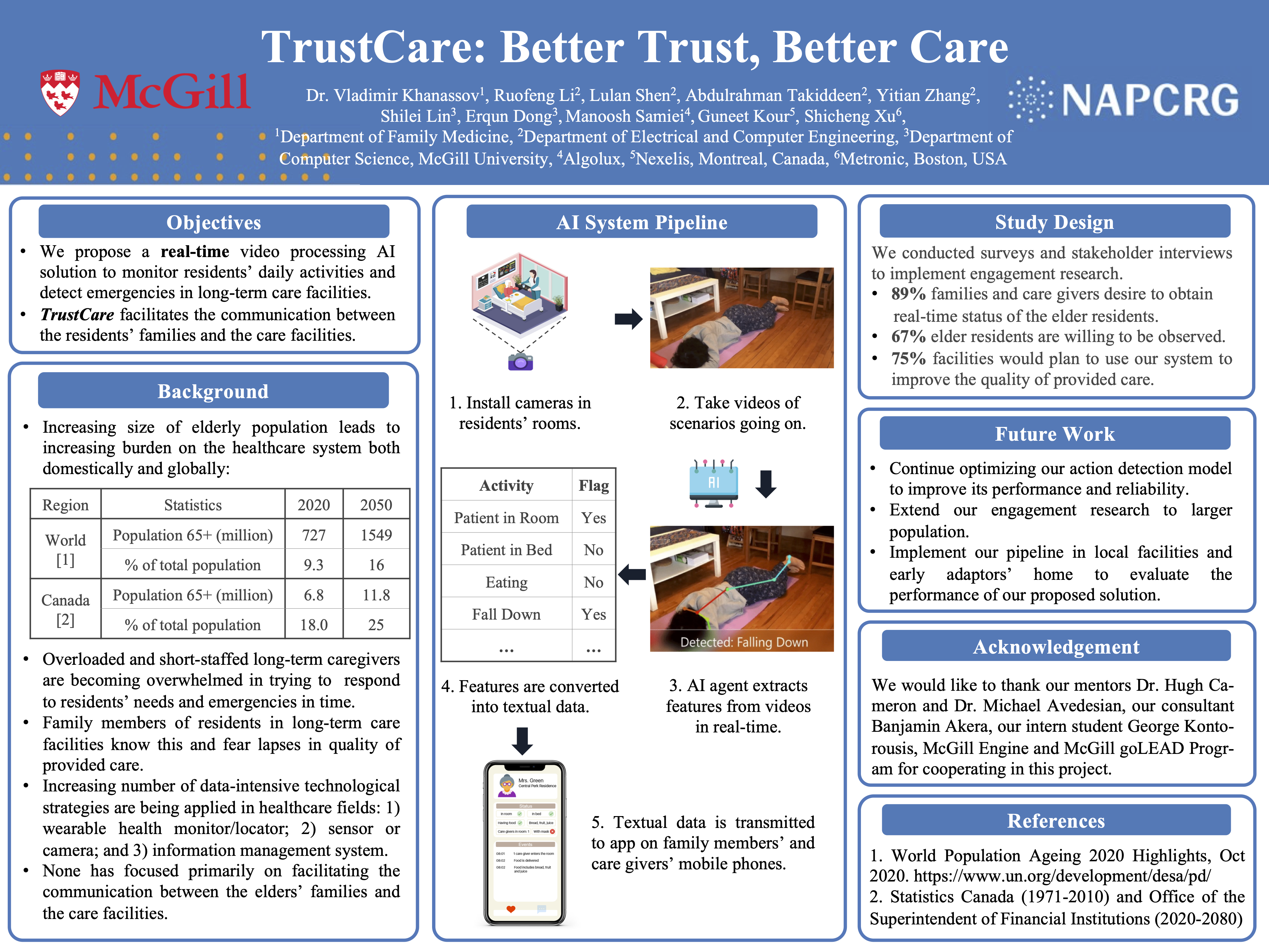PRP095: TrustCare: Better Trust Better Care
Vladimir Khanassov, MD, MSc; Guneet Kour; Yitian Zhang; Lulan Shen; Ruofeng Li; Shicheng Xu, MSc; Shilei Lin; Abdulrahman Takiddeen; Erqun Dong; Manoosh Samiei
Abstract
Objective: Our proposed system aims to fulfill this purpose and to strengthen the pipeline of delivering the real time status of the residents to their family members, making primary care more reliable.
App model: The system is mainly based on a DNN-based model, which takes the consecutive video frames across a temporal window as the inputs and detects the activity contained. The model can recognize 16 daily activities, such as eating and lying down, and one emergency case, falling down. We boost the precision of the falling down detection by bagging the output with a body orientation change detector. The summarized status and events of the residents will then be transmitted to the App.
Setting and study design: a feasibility study will be conducted in the long-term units of the Institut de Gériatrie de Montréal.
Population studied: Elderly patients with physical and cognitive impairments, progressive diseases, loss of autonomy and the caregivers in the facilities.
Results: We currently achieve an overall accuracy of 96.32% on a mixed subset of ETRI-Activity3D and NTU RGB+D dataset.
Conclusion: With our pipeline, the care workers will be able to respond to residents’ needs and emergencies in time, and the communication and trust between these two parties will be improved.

Nadir
11/19/2021This is intersting